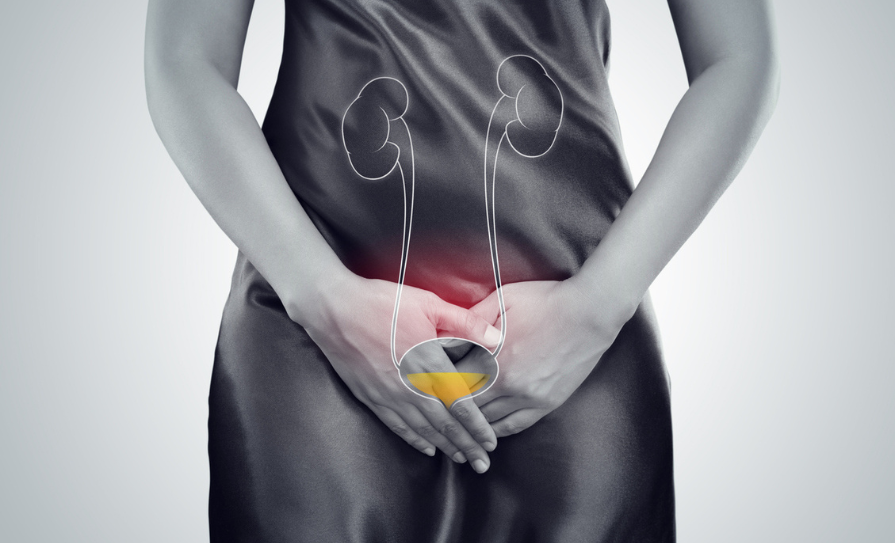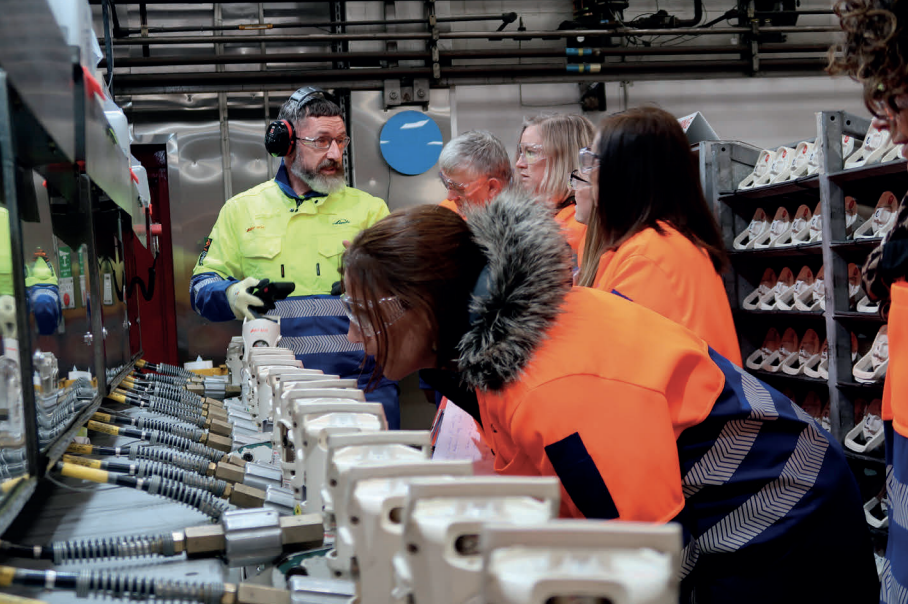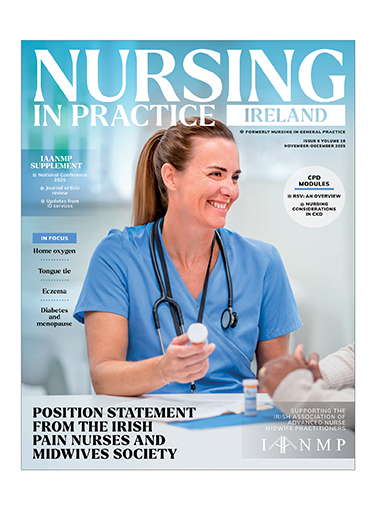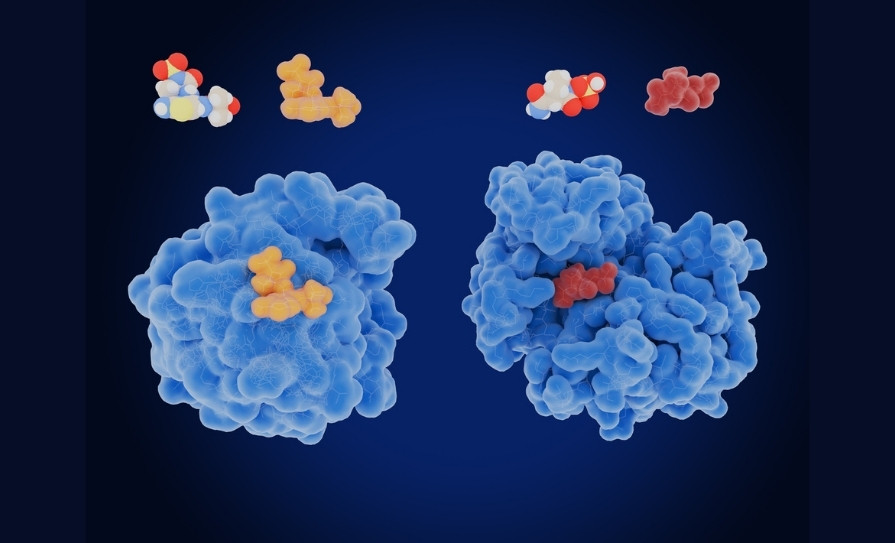Reference: Sep-Oct 2024 | Issue 5 | Volume 17 | Page 33
Bladder cancer is the 10th most common cancer and affects approximately 490 people every year in Ireland.1 It is the most expensive cancer to treat per patient over a patient’s lifetime, and annual directed medical costs are estimated to exceed $4 billion in the US and €4.9 billion in the EU.2,3 Bladder cancer is four times more common in men than women and incidence increases with age.
Approximately 70 per cent of patients diagnosed with the disease in Ireland are over 65 years of age. Although survival rates have improved as a result of earlier detection, robotic surgical methods, and the advent of immunotherapy, bladder cancer continues to be a major and growing contributor to the global cancer burden, particularly in wealthy nations.4
While treatment strategies and survivorship continue to improve, bladder cancer still has a significant impact on all aspects of a patient’s life. Although limited and deficient, the available data suggests that the disease carries an array of biopsychosocial challenges, with sexuality, body image, and the impact on family members among the most commonly reported unmet needs for bladder cancer patients. Recent and emerging literature would strongly indicate that an advanced nurse practitioner (ANP) is ideally placed to provide tailored, holistic care that addresses many of these unmet patient needs, can enhance service provision and efficiency, and contribute to optimal patient quality-of-life.
Risk factors for bladder cancer
The most significant risk factor for bladder cancer is smoking, which accounts for approximately 50 per cent of diagnosed cases. The incidence of bladder cancer in smokers is almost twice that of non-smokers.5 Smoking cessation has been shown to decrease the risk of urothelial cancer formation; smokers who have stopped for one-to-three years have a 2.6 relative risk compared with a 1.1 relative risk among those who have stopped smoking for more than 15 years.6
Occupational exposures are also significant risk factors, and account for between 5 and 10 per cent of all bladder cancer cases.7 Occupations that work directly with chemicals and dyes have the greatest lifetime risk. Particularly at-risk occupations that work with aromatic amines include tobacco, dye, and rubber workers; hairdressers; painters; and leather workers. Those that work with polycyclic aromatic hydrocarbons are also at risk, including chimney sweeps; nurses; waiters; alumni workers; petroleum workers; and sailors.7 Many of these professions are becoming increasingly female, and it has been reported that occupational exposures may be increasing among women in particular.
Increasing body mass index (BMI) has been shown in multiple meta-analyses to be a risk factor for bladder cancer development.8 One reason for this link is the strong association between smoking and obesity; however, BMI remains associated with bladder cancer even after smoking cessation. Furthermore, among patients already diagnosed with bladder cancer, obesity appears to attenuate prognosis and is associated with an increased risk of tumour recurrence and a shorter time interval to recurrence.9
Other risk factors include age; gender; parasite exposure (schistosomiasis); recurrent/chronic urinary tract infections; and previous pelvic radiotherapy. With so many risk factors, constant and consistent health promotion and education is very important with these patients.
Types of bladder cancer
Around one-quarter of bladder cancer cases are muscle invasive, which require systemic chemotherapy and/or immunotherapy, radical treatment (cystectomy or radiotherapy), or palliation. Muscle-invasive disease is subdivided into T2a and T2b. T2a includes invasion into the inner half of the muscularis propria, while T2b is deeper into the outer half. T3 disease constitutes invasion outside of the bladder proper into the peri-adipose tissue.8 T3a disease involves microscopic extension, whereas T3b is macroscopic extension. T4a disease is invasion of the prostatic stroma, uterus, or vagina, and T4b disease involves invasion of the pelvic or abdominal wall.8
Most bladder cancer cases are urothelial carcinoma (UC), and approximately 75 per cent of these are non-muscle invasive (NMIBC). NMIBC encompasses low and high grade non-invasive papillary neoplasms, carcinoma in situ (CIS), and urothelial carcinoma with invasion into the lamina propria. Other non-urothelial bladder malignancies that can arise include squamous cell carcinoma (SCC), small cell carcinoma, adenocarcinoma, and other tumours with mixed histology.
NMIBC is a chronic disease with high recurrence and progression rates, with most patients requiring invasive treatment and burdensome surveillance schedules with frequent hospital visits. Regular intravesical (bladder) treatments, namely Bacillus Calmette-Guerin (BCG), can last up to three years and surveillance can last 10 or more years, depending on the cancer stage and if the cancer returns. Due to the high cancer recurrence rate in this cohort of patients, timely treatment and surveillance is of paramount importance as well as commitment from the patients themselves.
Signs and symptoms
Painless haematuria is the most common presenting sign of bladder cancer. Approximately 1.3 per cent of patients with asymptomatic microscopic haematuria (three or more red blood cells per high-power field in a properly collected specimen in the absence of an obvious benign cause) will have bladder cancer, with estimates ranging from 0.4-to-6.5 per cent.10 Gross haematuria is associated with a higher rate of malignancy (estimated at 20 per cent).10 Typically, haematuria is intermittent and may be associated with Valsalva movements.
Haematuria is not the only manifestation of an underlying bladder cancer. Irritative bladder symptoms such as dysuria, urgency, or frequency of urination occur in 20-to-30 per cent of patients with bladder cancer.11 Although irritative symptoms may be associated with more advanced muscle-invasive disease, CIS is the more probable cause. Patients with advanced disease can present with pelvic or bony pain, lower-extremity oedema from iliac vessel compression, or flank pain from ureteral obstruction.11
Overview of treatments
Radical cystectomy is recommended in patients with T2-T4a, N0M0 disease, very high-risk NMIBC, BCG-refractory, BCG-relapsing, and BCG-unresponsive NMIBC, as well as extensive papillary disease that cannot be controlled with trans-urethral resection (TURBT) and intravesical chemotherapy/immunotherapy alone.12
Whilst radical cystectomy is the standard treatment for patients with muscle invasive bladder cancer, it only provides five-year survival in about 50 per cent of patients.13 To improve survival in patients with cN0M0 disease, cisplatin-based neo-adjuvant chemotherapy has been used since the 1980s.12
NMIBC is stratified into low, intermediate, high, and very high risk as per the European Association of Urology Guidelines.14 Following TURBT, low risk patients are placed on cystoscopy surveillance. Along with cystoscopy surveillance, patients with intermediate risk should be offered BCG for one year and patients with high risk for three years. Patients with very high risk should be offered radical cystectomy; however, if they are unfit for surgery, they should receive three years of BCG.14
Impact of bladder cancer
Unfortunately, insufficient research exists regarding the specific impact of bladder cancer, especially NMIBC, on patient quality-of-life. A systematic review of the available qualitative evidence on patients’ experience of a bladder cancer diagnosis identified a significant impact of the disease upon both the patient and their next-of-kin, and found that currently, there is not enough attention paid to this by practitioners.15
Sexuality and body image were the two primary reported areas of unmet needs for patients that resulted in a significantly reduced quality-of-life. These findings suggest that healthcare professionals need to be more proactive in eliciting conversations about areas of distress, and given the gender-specific concerns highlighted in the review, tailored interventions would be more appropriate.
Knowledge of the patient’s experience from diagnosis through to survivorship, and highlighting the challenges in reporting concerns, are both valuable and important aspects of any approach. Patients report a desire for healthcare professionals to better understand their lived experience, and in particular, the impact of bodily and sexual changes.16 NMIBC is comparable to any other chronic illness in that patients often face long, arduous treatment, and surveillance regimens.
Each person living with bladder cancer faces a unique diagnosis and disease trajectory. The emphasis needs to be on dealing with the individual person, and not only their diagnosis. Suitable structures (with a degree of flexibility) should be in place to achieve better supportive care and information for patients so that they have somewhere to turn while dealing with the challenges they are facing. Increasing evidence is emerging to support the role of the ANP in managing these, and many other, vital areas of care.
The role of an ANP
It has been well documented that ANP roles improve patient care by providing a holistic service and improving access to healthcare for patients. ANPs have also been widely accepted by patients, nurses, doctors, and other members of the multidisciplinary team. Ireland’s National Cancer Strategy 2017-2026 emphasises the value of an increased role of the ANP in urology to meet the healthcare needs of the population.17 These needs can arise at any and all stages of the disease trajectory.
NMIBC is a chronic disease with high recurrence and progression rates, with most patients requiring invasive treatment, burdensome surveillance schedules, and frequent hospital visits. Surveillance can last 10 or more years depending on the cancer stage and any recurrences. Treatment-related side-effects may interrupt therapy and possibly result in its discontinuation.
Irish research has found that an ANP-led NMIBC surveillance service resulted in effective care and support, safe care and support, and efficient use of resources. Findings also indicate that ANPs demonstrate the ability to complete an entire episode of care in equivalent time to urology colleagues.15 This Irish data provides a tentative framework for the adoption of ANPs in urology in other centres.
ANPs in urology can also enhance patient care when trained to perform clinical interventions, such as cystoscopies, as part of bladder cancer management strategies. The literature reports that nurse cystoscopists provide safe and competent services, improve waiting times, and have high patient satisfaction rates. Additional important patient benefits include continuity of care, the provision of psychological support, and health promotion.18 Overall, the ANP can optimise a broad range of patient outcomes in bladder cancer care.
ANP-led NMIBC treatment and surveillance clinic in TUH
Preparing for and implementing the nurse cystoscopist role requires a commitment from all of the multidisciplinary stakeholders to successfully deliver the initiative, which was the case locally at Tallaght University Hospital (TUH). In January 2023, I commenced an ANP-led clinic following successful training in performing flexible cystoscopy. In the first year, I have carried out over 350 flexible cystoscopies and delivered over 250 doses of immunotherapy/chemotherapy, all within the targeted timeframe.
During the Covid-19 pandemic and then the cyber-attack, surveillance was postponed for patients with low grade NMIBC due to the lesser risk of recurrence, and therefore, many of these patients had to be re-identified to reinstate timely surveillance. I began to validate the cystoscopy waiting list earlier this year and have identified around 160 patients with NMIBC that surveillance has been delayed. Since then, and in accordance with the most up-to-date guidance, I have been able to safely discharge 59 patients to date.
This past year has been a rewarding experience for me on a personal and professional level and patients continue to report positive experiences of attending clinics. With close collaboration and support between the consultants and the ANP, the introduction of an ANP-led NMIBC treatment and surveillance clinic in TUH has proven successful in providing timely and safe patient care.
Conclusion
Patients’ quality-of-life can be negatively affected at various stages of the bladder cancer trajectory. An ANP-led service for these patients provides holistic, supportive care throughout all phases of the patient journey, facilitates patient education and shared decision-making, promotes continuity of care, and aids the establishment of a therapeutic rapport. Addressing complex issues like sexuality and body image require a safe environment, which is created via these pathways. ANP-led delivery of appropriate treatment and surveillance protocols within an appropriate timeframe also improves patient outcomes, service delivery, and waiting times.
References
1. Irish Cancer Society. Bladder cancer. Dublin: ICS; 2024. Available at: www.cancer.ie/Cancer-Information-and-support/Cancer-types/Bladder-cancer.
2. Milken Institute Centre for Strategic Philanthropy. Bladder cancer – A giving smarter guide. MIlken Institute 2016 Report on Bladder Cancer. US: Milken Institute; 2016. Available at: www.milkeninstitute.org/report/bladder-cancer-giving-smarter-guide.
3. Leal J, Luengo-Fernandez R, Sullivan R, Witjes JA. Economic burden of bladder cancer across the European Union. Eur Urol. 2016;69(3):438-447.
4. Sung H, Ferlay J, Siegel RL, et al. Global Cancer Statistics 2020: GLOBOCAN Estimates of incidence and mortality worldwide for 36 cancers in 185 countries. CA Cancer J Clin. 2021;71(3):209-249.
5. Hall MC, Chang SS, Dalbagni G, et al. Guideline for the management of non-muscle invasive bladder cancer (stages Ta, T1, and Tis): 2007 update. J Urol. 2007;178(6):2314-2330.
6. Koshiaris C, Aveyard P, Oke J, et al. Smoking cessation and survival in lung, upper aero-digestive tract, and bladder cancer: Cohort study. Br J Cancer. 2017;117(8):1224-1232.
7. Cumberbatch MG, Rota M, Catto JW, La Vecchia C. The role of tobacco smoke in bladder and kidney carcinogenesis: A comparison of exposures and meta-analysis of incidence and mortality risks. Eur Urol. 2016;70(3):458-466.
8. Wein AJ, Kavoussi LR, Partin AW, Peters CA. Campbell-Walsh Urology: 4-Volume Set, 11th Ed. Philadelphia: Elsevier; 2016.
9. Wyszynski A, Tanyos SA, Rees JR, et al. Body mass and smoking are modifiable risk factors for recurrent bladder cancer. Cancer. 2014;120(3):408-414.
10. Khadhouri S, Gallagher KM, MacKenzie KR, et al. The IDENTIFY study: The investigation and detection of urological neoplasia in patients referred with suspected urinary tract cancer – a multicentre observational study. BJU Int. 2021;128(4):440-450.
11. Barbarian KN. Bladder cancer: Clinical presentation. Medscape [internet]. 2024. Available at: www.emedicine.medscape.com/article/438262-Clinical?form=FPF.
12. Witjes JA, Bruins HM, Cathomas R, et al. European Association of Urology Guidelines on Muscle-invasive and Metastatic Bladder Cancer: Summary of the 2020 Guidelines. Eur Urol. 2021;79(1):82-104.
13. Stein JP, Skinner DG. Radical cystectomy for invasive bladder cancer: Long-term results of a standard procedure. World J Urol. 2006;24(3):296-304.
14. European Association of Urology. EAU Guidelines. Edn. Presented at the EAU Annual Congress Milan 2023. ISBN 978-94-92671-19-6. Available at: www.uroweb.org/guidelines/compilations-of-all-guidelines/.
15. Edmondson AJ, Birtwistle JC, Catto JWF, Twiddy M. The patients’ experience of a bladder cancer diagnosis: A systematic review of the qualitative evidence. J Cancer Surviv. 2017;11(4):453-461.
16. Fitch MI, Miller D, Sharir S, McAndrew A. Radical cystectomy for bladder cancer: A qualitative study of patient experiences and implications for practice. Can Oncol Nurs J. 2010;20(4):177-187.
17. Department of Health. National Cancer Strategy 2017-2026. Dublin: Stationery Office; 2017.
18. McConkey R, Hahessy S. Developing the advanced nursing practice role in non-muscle invasive bladder cancer surveillance in Ireland. Int J Uro Nurs. 2018;12:91-95.













Leave a Reply
You must be logged in to post a comment.